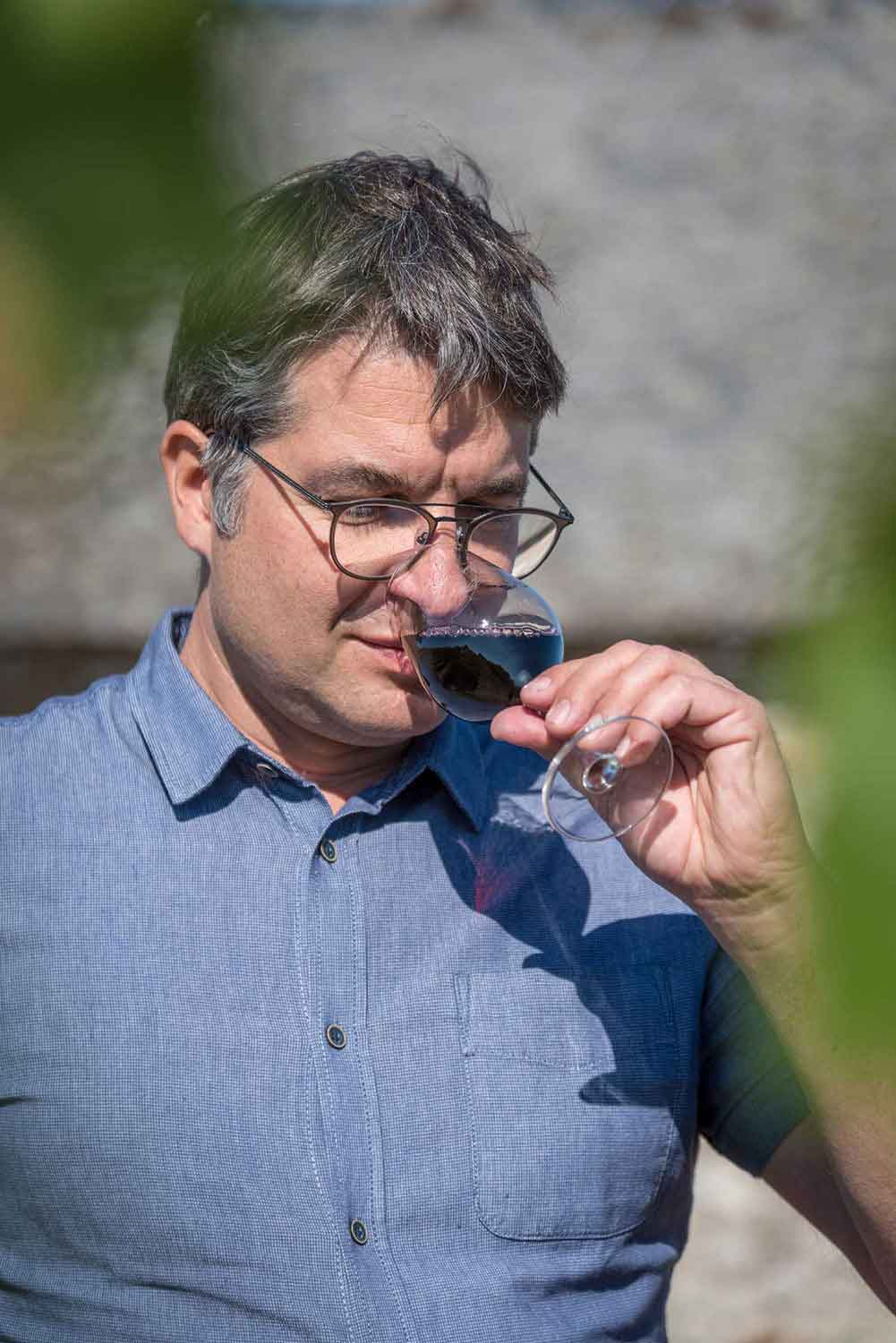The art of wine tasting is one that can be learnt, but you don’t need to be a specialist to enjoy wine. A few hints and tips will assist you to develop your tasting skills, identify aromas and understand what a wine’s colour means. Because wine isn’t just about the tastebuds! This multisensorial coaching will help you to describe, in your own words, your experience of tasting wine. And don’t forget that the appreciation of a wine is always subjective.
Above all, forget any complexes you may have and just be curious. Read about wine and ask questions during tastings. By enriching your knowledge about wine, you will be better placed to recognise its characteristics. Begin with the grape varieties that you like best to develop your taste. To start with avoid wines that are too complex, but try wines that you don’t know, stay open to new sensations to educate your palate. Try different wines, taste informally, but with pleasure.
Many wine producers propose commented or themed tastings. These allow you to discover where the wine is made, the vineyards and the terroir. The winemakers or sommeliers that are there to welcome you are always available to answer your questions and propose wines for tasting. Take the opportunity to try something different and discover some gems!

Wine tasting is an art. When learning, whether informally or in a class, what is important is that it should always be pleasurable. Pleasure in tasting, smelling, observing… all your senses will be involved. Follow these stages and learn to discover your tastes and preferences.
What does it look like? Tilt your glass slightly to observe the intensity of colour, its highlights and depth. These will give you a first indication of its age and concentration, for example.
What does it smell like? Begin by smelling the wine, without agitating the glass. This is what is known as the first nose. Then swirl the wine gently in the glass to liberate more aromas and smell again. This is the second nose. You can even smell again once the glass is empty to get the concentrated aromas. Think in terms of families of aromas to start with, based on your memory. Are they floral (honeysuckle, rose, violet), fruity (yellow fruit, red fruit, citrus) or spicy (pepper or vanilla)? It’s a way of rapidly getting familiar with the typical aromas of a particular grape variety.
What does it taste like? Take a sip of wine and swoosh it around in your mouth to increase the contact with your tastebuds. Concentrate on its texture, its flavour, and the aromas that you experienced on the nose. Then spit it out if you want to taste several wines. Do you detect new flavours once you have spit out the wine? If so, it’s a good sign. It means that the wines you are tasting are aromatically complex. And, to finish, evaluate the time that the aromas persist on the palate, its length, measured in caudalies. It’s easy to remember, one caudalie equals one second.

Did you know that the persistence of a wine, the length of time the aromas stay in the mouth, is measured not in seconds, but in caudalies?

To train your wine memory, it can help to write down your tasting notes, in your own words. And don’t hesitate to try food and wine pairings, from the classic to the most unexpected.
Wine is made from both white and black grapes, but it is the way in which they are made that really determines the colour of the wine. The method of production and the grape varieties used influence the quality and the style of the wine. It is the tannins and the alcohol which give red wines their power. The acidity in white wines makes them fresh and fruity. Ageing in barrel will give other aromas. Each grape variety brings its own characteristics to the wine.

Loire wines exist in numerous internationally renowned appellations. Circuits proposing visits and tastings, that take in chateaux and troglodyte caves, tradition and innovation, offer the opportunity to discover all the nuances of the region’s wines. Whites, reds, rosés or sparkling… the choice is vast, and the quality is incomparable. Be curious, be epicurean, and your visit is sure to be a success!
Œnology is the science of wine. It is the complete study of wine including vine cultivation, winemaking, ageing and bottling. There is often confusion between the roles of the oenologist and the sommelier, who is the person that advises you on your choice of wine based on your tastes and desires. You will often meet sommelier guides when you visit wine cellars, and they are trained to help you discover the wines of their Domaine. Don’t hesitate to ask them questions.
There are no less than 7,000 grape varieties in the world, but only 200 in France. It’s impossible to know them all! But here are some of the more famous varieties in the Loire and their aromas, to help you recognise them: